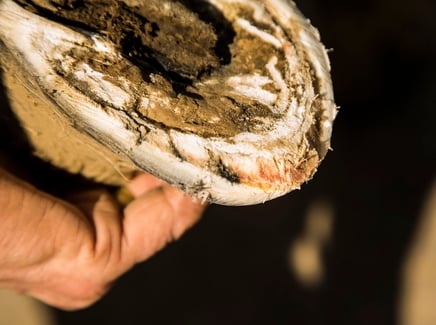Laminitis – the word alone is enough to make horse owners shudder! This painful condition is well known in the equine community, yet you can be left with many more questions than answers if you have never dealt with laminitis in a horse before.
The good news is that we’re here to help! From symptoms to treatment and prevention, we’ve got the tips you need to rein this condition in and help keep your horse healthy and comfortable.
Ready? Let’s quit foaling around and get to it!
What is Laminitis in a Horse?
Before we saddle up and talk more about the treatment and management of this condition, you may be wondering – what exactly is laminitis in a horse?
As a common, extremely painful, and frequently recurrent condition, laminitis in horses also significantly affects ponies and donkeys. In fact, more than 7% of equine deaths occur due to laminitis, so any horse owner should take this condition seriously. Even so, the severity of laminitis does range from more common mild, manageable cases of foot tenderness to chronic founder, which is where those more serious situations can arise.
As a result of laminitis, the laminae, which form a junction between the hoof walls and the foot, including the pedal bone, become inflamed. As a result of the laminar destabilisation, the pedal bone may rotate or sink (founder) within the hoof capsule.
The diagram below shows what a healthy hoof looks like versus one that is affected by horse laminitis.
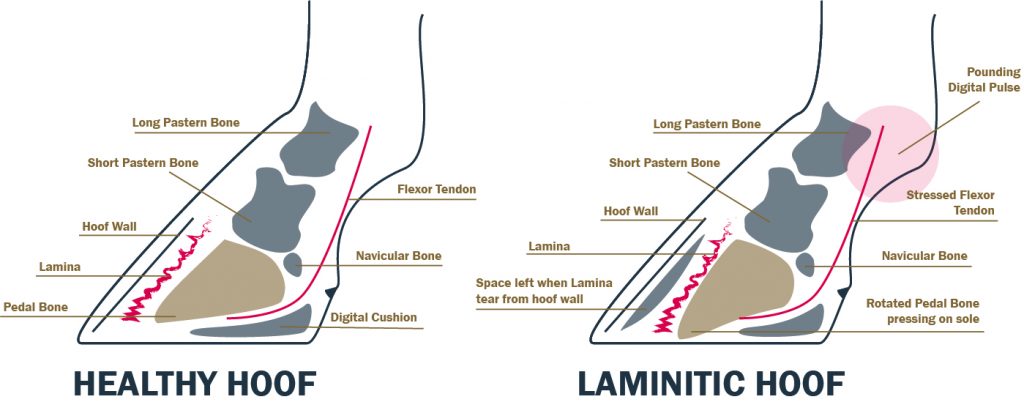
Source
Generally, there are three causes of laminitis in horses:
- Endocrinopathic laminitis: A sudden access to lush pasture or endocrine disruption (such as pituitary pars intermedia dysfunction) can result in this type of laminitis.
- Sepsis-associated laminitis: Caused by diseases associated with inflammation (like colic).
- Supporting limb laminitis: Mechanical overload on the joint (the other leg may be fractured or infected, so the one bearing weight is at risk for laminitis).
However, laminitis is a complex disease, and recent research constantly changes our understanding of its causes, so if you're worried about a change in your horse's behavior or conformation, don't be afraid to contact your vet.
Laminitis Horse Symptoms
It’s important to know the signs and symptoms of horse laminitis, as the earlier you can spot them, the better your horse’s chances of recovery.
Laminitis horse symptoms can include:
- Sudden shorter stride
- Reluctance to walk on hard surfaces
- On the hard ground and when turning, appear lamer
- When resting, the horse seems to shift its weight between its feet
- Digital pulse at the back of the pastern increased
- Upon touching the hooves, they feel warm
- Use of hoof testers causes pain, especially around the frog on the foot
The stance of a horse with laminitis is fairly recognizable to horse owners:

Source
The characteristic of leaning back onto their hooves as pictured above sometimes presents as a reluctance to move forward first, but if you take a moment to observe them while standing still, it should be fairly obvious that their conformation is off.
If you suspect the horse has got this kind of stance going on, or are uncertain about changes to their regular posture, check in with your veterinarian. They will be able to provide your horse with other tests and check into their vitals to see if anything is wrong.
Horse Feed for Laminitis
Your horse deserves the best in their feed, and their diet is even more important to pay close attention to for laminitis horses.
Here are some basic guidelines for feeding a horse with laminitis to help avoid exacerbating their condition:
- Low Sugar: Make sure your horse with laminitis is fed exclusively low sugar forage. Choose hays low in sugar, such as mature or stemmy tropical grass hays and mature or stemmy lucerne hays.
- Avoid Grain: Molasses, oats, corn, wheat, rice, barley, millrun, millmix, or bran (rice or wheat) should never be fed to a laminitis horse.
- Balance Vitamins and Minerals: To help laminitic horses heal and to help them resist other diseases and infections, ensure the diet contains enough protein, amino acids, vitamins, and minerals.
Aside from what you’re feeding your horse, it’s also important to consider how you’re feeding them. Simple things like when, how much, how often, and where your horse eats can all impact laminitis horse symptoms.
Below, we have a few additional tips for laminitis horse feeding to help reduce their discomfort and symptoms:
- Slow down the eating process by placing a brick in the feed bucket
- Slow feeder hay nets are useful for slowing speedy eaters, too
- If you are unable to confine your horse to a feed-free area, use a grazing muzzle
- You should allow your horses to graze at night when the pasture sugars are at their lowest levels if they are on a laminitis diet
- If they can’t avoid pasture, try to implement early morning (between 5 am and 10 am) grazing because pasture sugar levels are lower at that time
- Maintain correct hoof angles by scheduling regular farrier visits (every 4-5 weeks)
How to Treat a Horse with Laminitis
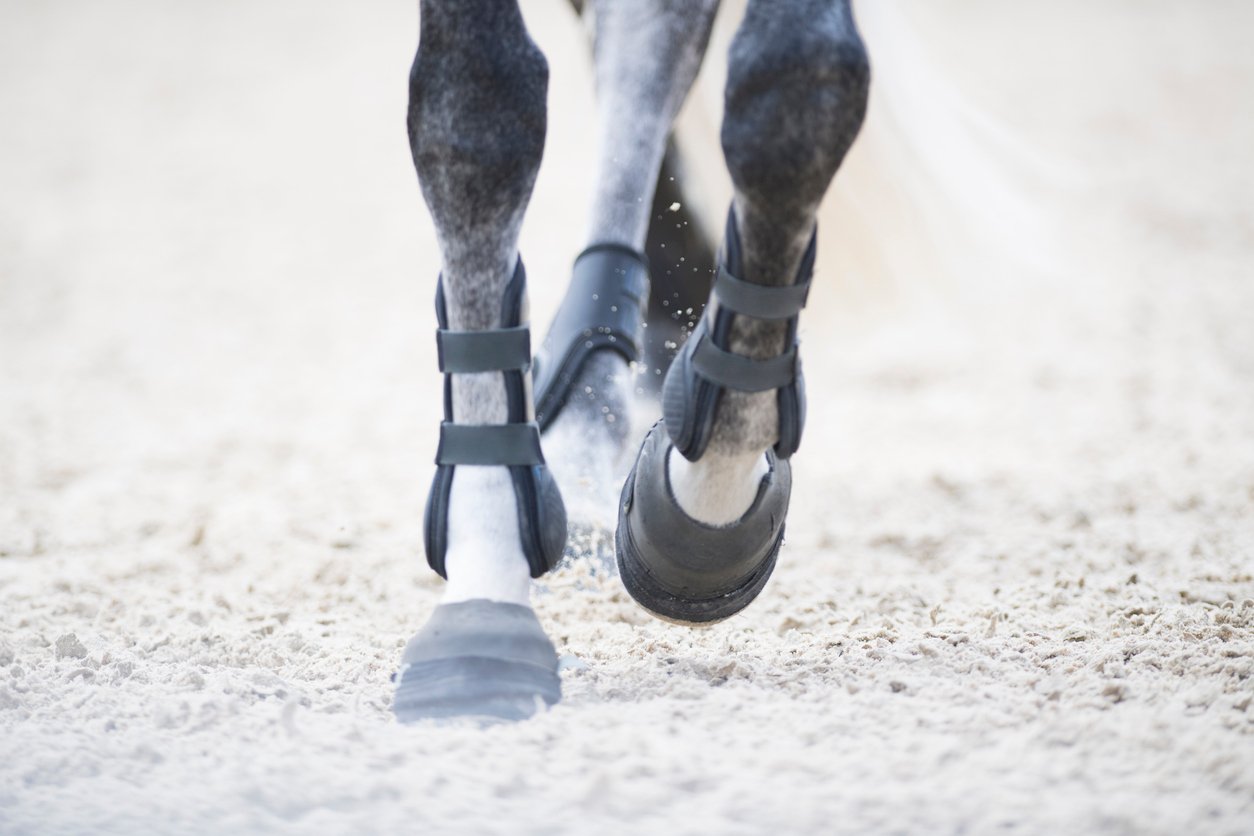
Laminitis is a painful disease. The inflammation in your horse’s hooves can cause lameness and interfere with their ability to walk, and it only makes sense you want to handle this condition ASAP!
Thankfully, modern veterinary medicine has provided us with plenty of options for managing this condition with relative ease, and all options can help make your horse more comfortable.
Horse Boots for Laminitis
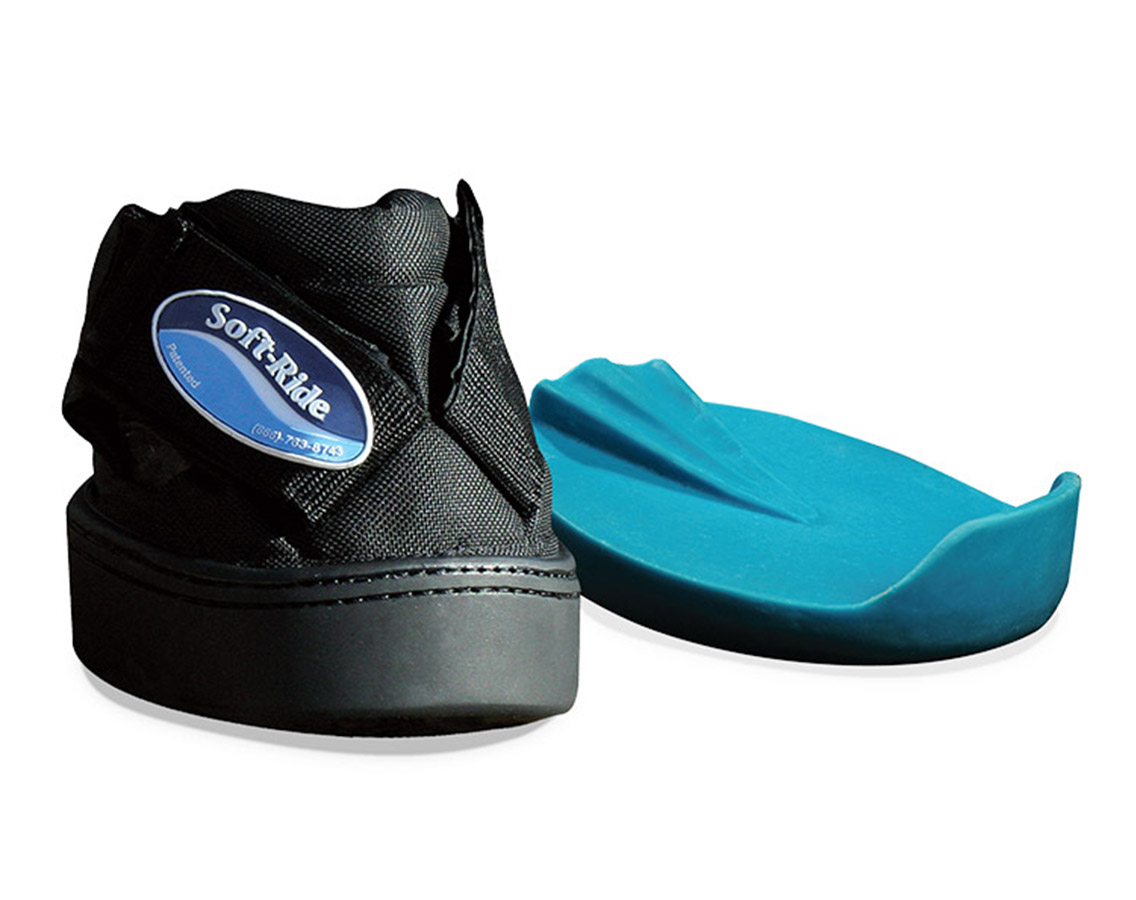
Source
Because of laminitis, the sensitive laminae that line the sole of the horse's foot weaken and become inflamed. In some cases, this tissue can tear, resulting in the rotation or dropping of the pedal bone. It can lead to painful walking and even just standing for your horse.
Often, the solution for reducing the pain and helping your horse's hoof get the support it needs is adding soft padding to their stall and removing their shoes, such as a thick bed of shavings. And while this can be helpful for your horse's recovery, it is not very useful when you want to get them out for exercise and doesn't do anything to help aid in circulation or stabilize the hoof.
A better choice is to utilize a set of horse boots for laminitis. These specialized horse "shoes" are basically padded compression socks for equines! It allows them to stabilize their hooves, while the compression helps to increase circulation and aids healing. Traditional shoes should be removed during this time to relieve pressure on the laminar attachments.
Horse laminitis boots should only be used alongside other veterinary care as a supplement and aren’t going to cure your horse’s laminitis. They simply provide comfort and protection for their sensitive hooves during their recovery.
Horse Laminitis Supplements
If you're hoping to get help from a laminitis supplement for horses, it's important to know that supplements won't cure laminitis or make a lame horse sound – only prescription drugs and medicines can do that. Call your veterinarian immediately if your horse shows signs of laminitis because it is a medical emergency.
There are some ingredients that can be helpful for treating symptoms of laminitis in horses:
- Tyrosine
- Iodine
- Amino acids
- Essential fatty acids
- Phospholipids
- Vitamin A
- Copper
- Calcium
- Zinc
Additionally, feeding your laminitis horse a joint supplement can help strengthen their joints and reduce inflammation caused by laminitis. And while some experts have said glucosamine, a common ingredient in horse joint supplements, may not be good for laminitis horses, that isn’t necessarily true.
Only a small amount of glucosamine is converted to sugars! According to some studies, 11g of glucosamine in a 500kg horse would only increase the blood glucose level by 1%, which is barely noticeable. Therefore, oral administration of large doses of glucosamine to horses has no negative impact on glucose metabolism and therefore no negative impact on laminitis.
A significant reduction in side effects was observed with glucosamine compared to non-steroidal anti-inflammatory drugs (NSAIDs). Consequently, feeding horse joint supplements to laminitis horses is safe and effective, and these supplements can significantly impact their everyday life.
Horse Anti Inflammatory Supplements
Equine joint supplements are a great complement to a course of laminitis treatment. They help make strong joints and soft tissues and also reduce inflammation and pain associated with joint conditions. Why is this so important? Unfortunately, laminitis comes along with other conditions like PPID and EMS. These conditions can make your horse weak and susceptible to illness and infection, so building their strength is important!
Ingredients often found in horse supplements like those outlined in the table below can be helpful for reducing laminitis horse inflammation and pain.
|
Equine Joint Health Ingredient
|
Benefit
|
|
MSM
|
Reduces pain and inflammation in the body, including joints.
|
|
Glucosamine
|
Treats joint inflammation, breakdown, and loss of cartilage.
|
|
Hyaluronic Acid
|
Improves joint fluid viscosity and lubricates joints
|
|
Chondroitin
|
Plays an important role in preventing cartilage breakdown and stimulating cartilage repair.
|
Best Horse Supplement for Laminitis
You want the best of the best for your horse! Whether they are performance horses or leisure horses, a supplement can help reduce symptoms of laminitis and help get your horse back under the saddle or help prevent it from happening in the first place.
Just remember that laminitis is a serious condition and needs the supervision and management of a veterinarian, and often a multi-faceted approach to healing is the best way to treat this condition.
Alrighty, with that out of the way, let’s get to our top picks for horse supplements for laminitis!
Brand #1: LaminAid
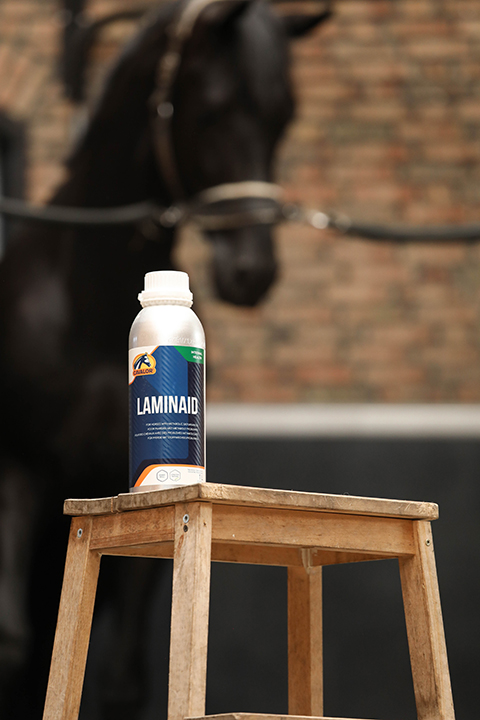
Source
For horses who suffer from laminitis-related metabolism problems and have sensitive hooves, this offering from Cavalor is a versatile option that will suit their needs.
It supports a horse’s delicate intestinal flora and brings hormonal and metabolic processes back into balance, as well as helping to support blood circulation and promote blood flow in the hoof. The liquid format is easy to serve and makes feeding a breeze.
Brand #2: Laminiaze
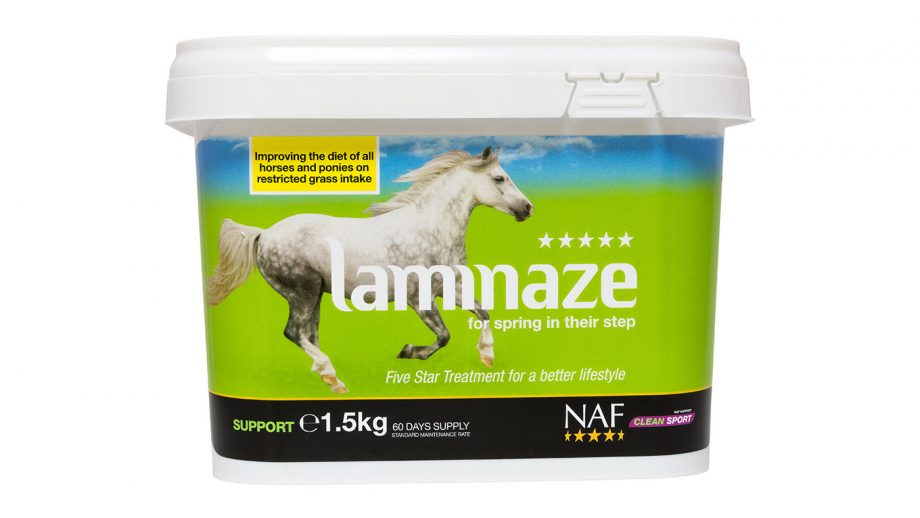
Source
Ready to be “laminaze-d”? This supplement is designed to support the diets of equines who are on a specialized diet to cope with laminitis. It contains mint, ginger, and magnesium oxide to provide gut support and maintain hoof health. It offers your horse gut balancing protection, especially during spring and autumn periods when grass is particularly lush.
The supplement is available in a powder format, so it’s easy to serve and incorporate into daily feeding.
Bonus: Protect Joint Health with TRI-ACTA for Equine

For laminitis horses especially, a healthy balance of quality feeds is key. And that balance should extend to the contents of your horse supplement. Too much extra junk in an equine joint supplement is both a waste of money and time for you and your horse.
That's why we recommend TRI-ACTA’s family of equine supplements to help your laminitis horse recover from a flare-up and protect them from other joint injuries and conditions such as arthritis.
Both regular strength TRI-ACTA and extra strength TRI-ACTA H.A. contain 100% active ingredients, including two types of glucosamine to support the health of your horse’s joints. Glucosamine hydrochloride is readily absorbed, meaning that your laminitis horse can more easily process glucosamine in this form. Glucosamine sulfate promotes collagen production, which is incredibly important for joint health.
Besides containing active ingredients, TRI-ACTA is also made of exclusively pharmaceutical grade components and is a Health Canada-approved Veterinary Health Product, so you can trust your horse is getting exactly what they need and nothing they don't!
With so much information out there about laminitis horses’ care and treatment, as well as what is safe to do with them while they are experiencing this condition, we wanted to break down a few of the most common questions we hear about laminitis.
Read on to get the answers you need to better prepare for laminitis horse care.
If you suspect that your horse has laminitis, don't ride him until after he's been examined by a veterinarian who knows how to treat this condition (or at least talk with him about what he may be able to do).
Once they've been diagnosed by an expert and treated appropriately, horses with laminitis are often able to return safely under saddle within 6 months or less. However, every case is unique so talk through options with both your vet and farrier before making decisions in order to not just reduce pain but also ensure long-term health outcomes for all parties involved in the treatment plan development process.
If you suspect your horse has laminitis, you may wonder what to give a horse for inflammation. In horses with laminitis, NSAIDs are the most commonly used analgesics. The most commonly prescribed analgesic for laminitis is phenylbutazone (“bute”), which is the most effective drug for treating orthopedic pain in horses.
Laminitis can be a very serious and life-threatening condition in horses. However, the right treatment coupled with proper management can greatly decrease the risks associated with the condition.
With powerful anti-inflammatory ingredients to help reduce swelling and pain associated with joint conditions and the inclusion of chondroitin and glucosamine for horses to strengthen and improve joint health, it's the perfect supplement for any horse, laminitis or not.
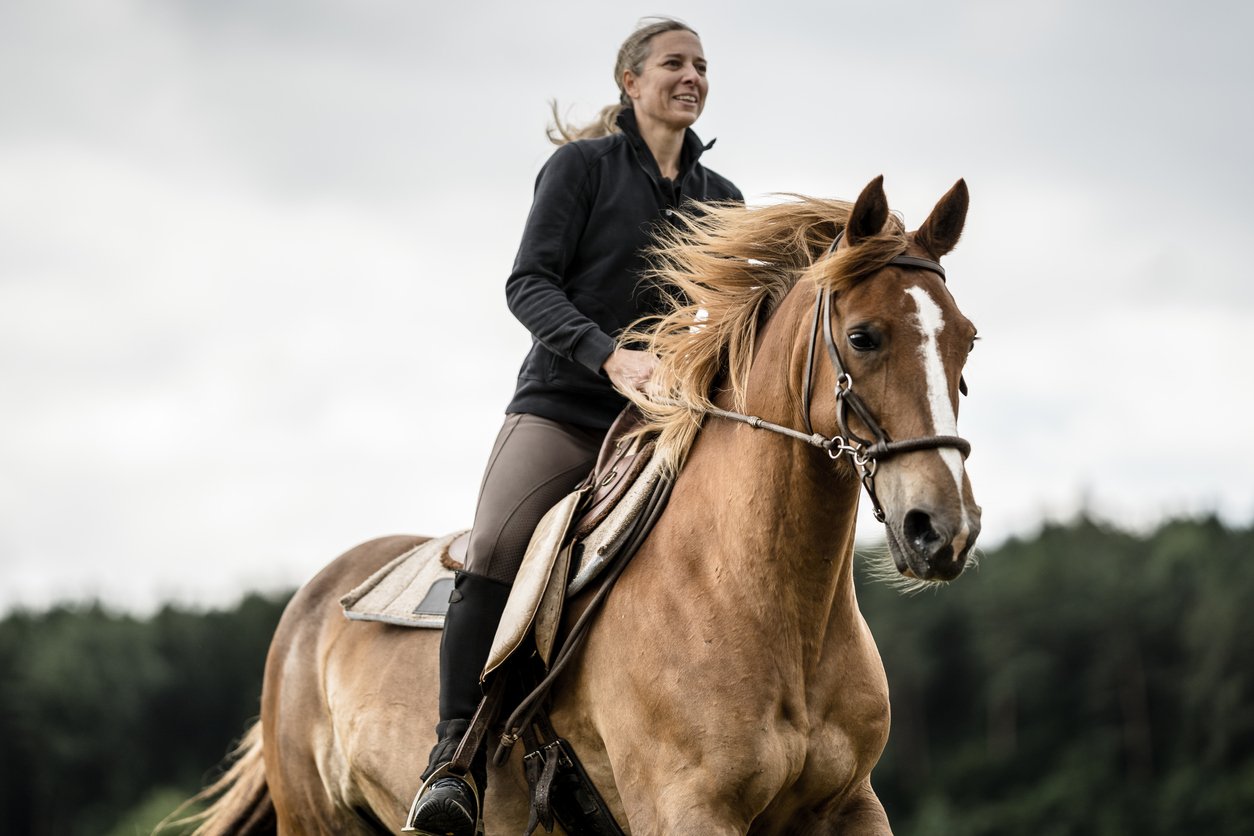

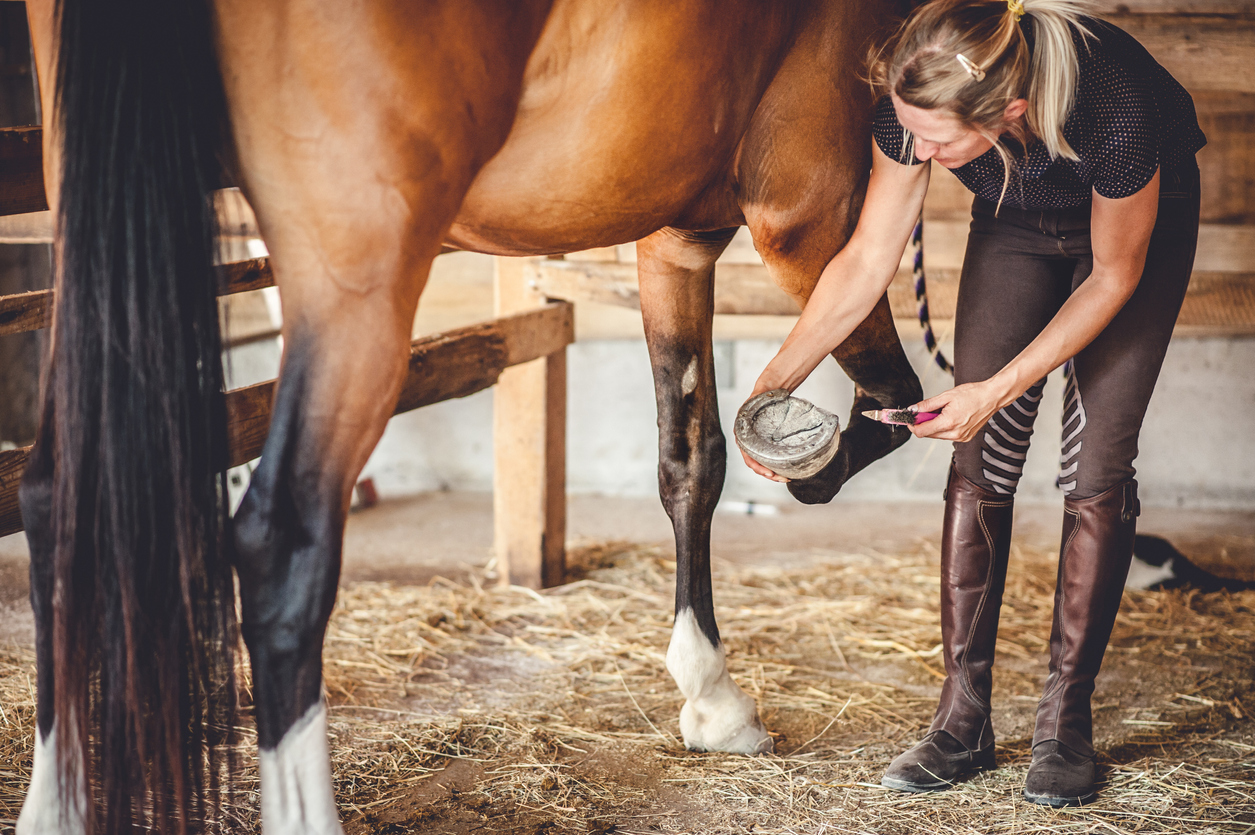


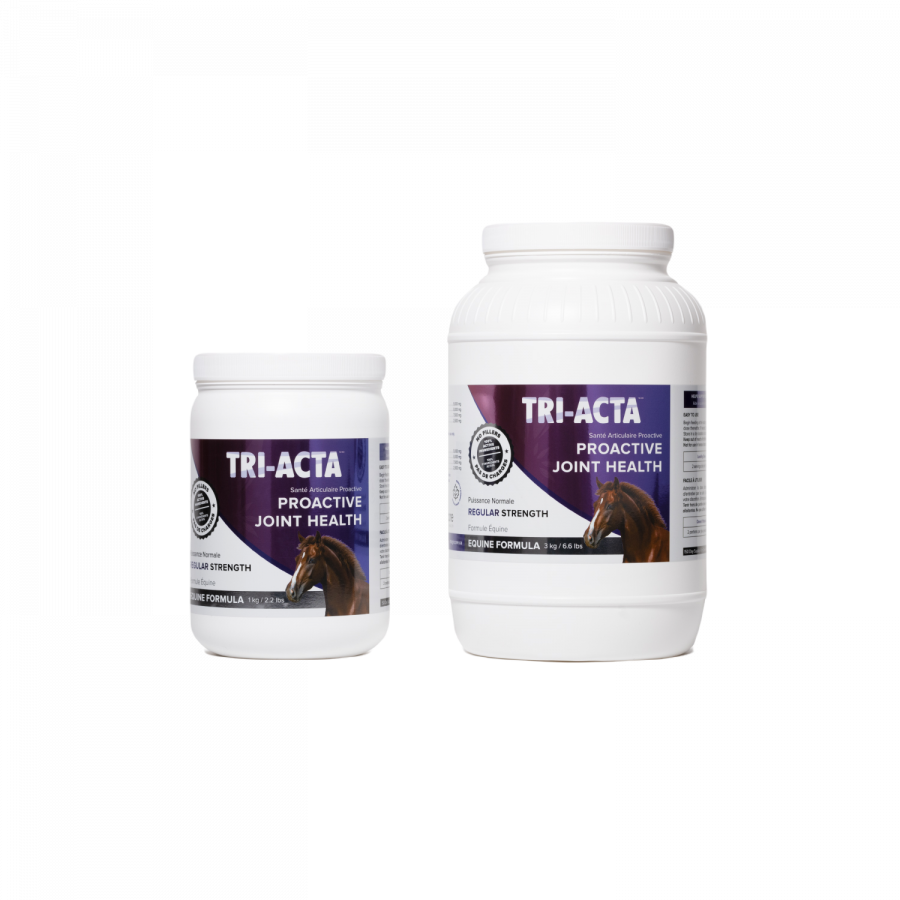
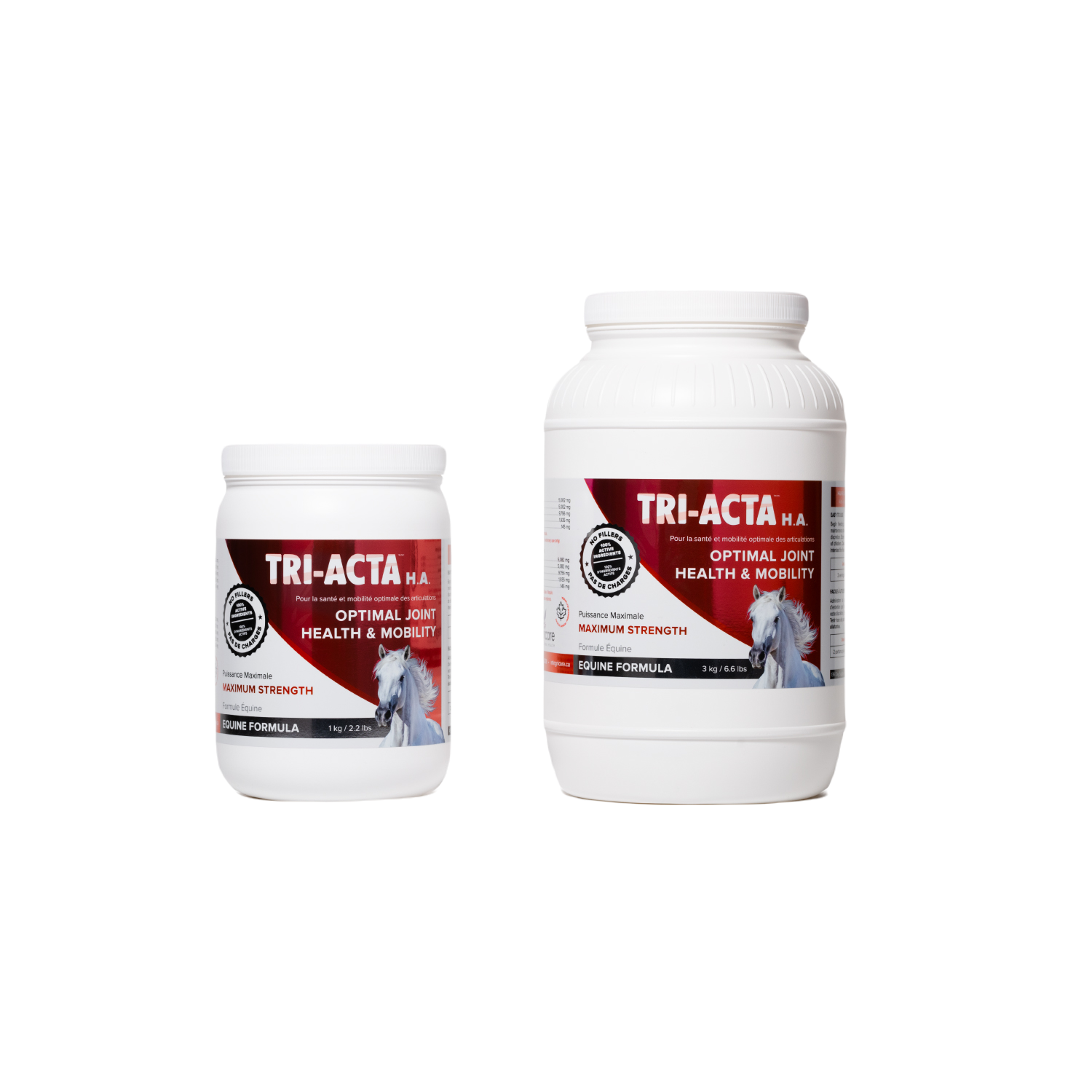





.jpg?height=2000&name=Cliick_Integricare-DISPLAY-REVISEDV2%20(1).jpg)

